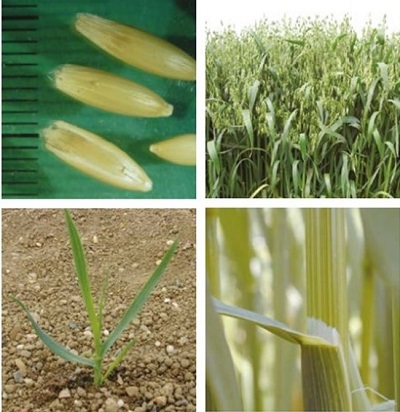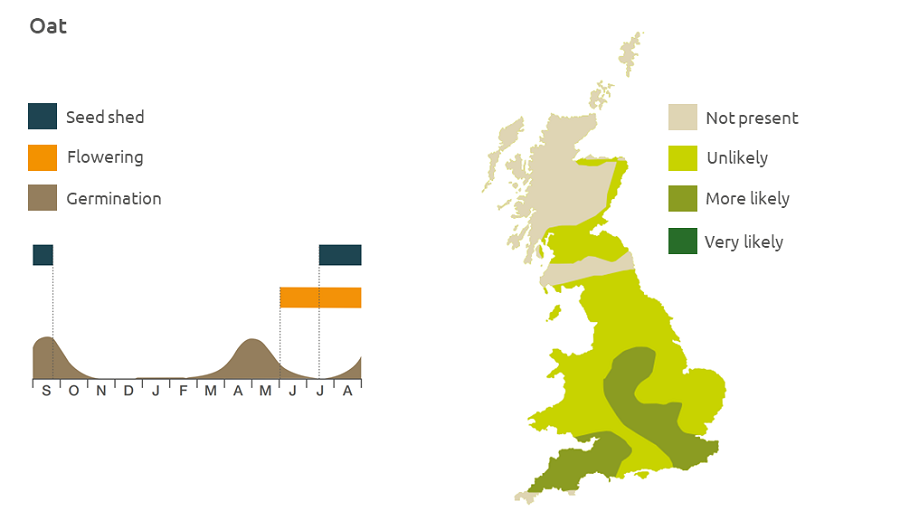- Home
- Knowledge library
- Distribution and biology of volunteer oat weeds in the UK
Distribution and biology of volunteer oat weeds in the UK
Oat can grow as a volunteer weed from seed shed from previous crops. Find out how to identify and control it.
Overview
Most cereal oats (Avena sativa) are not very winter-hardy, although volunteers of winter varieties survive after autumn germination in subsequent crops. They do not persist as weeds for more than a couple of years, because the seedbank is less persistent than for wild-oat, and they are not as competitive as wild-oat.
- It is particularly competitive in winter wheat
Description
It is an annual grass with stems up to 100cm tall. It is generally a soft green colour before ripening. Leaf blades are broad and hairless. The flowering spike is open, with groups of two or three flowers in each spikelet, the lower of which may be awned.
Key features
Fruit: The lemmas are broad with just the tip notched. The grains do not have a tuft of hair at the base.
Lookalikes
All the oat species are difficult to tell apart – at the seedling and adult stages.
Winter wild-oat germinates in the autumn, while wild-oat usually germinates in the spring.
Compared with winter wild-oat, the leaf margins of wild-oat are hairier near the base and the spikelets are smaller, lemmas are broader and end in two small teeth. The two species are easier to tell apart when the fruit is ripe, wild-oat seeds separate from the spikelet with no scar.
The ligule of cultivated oat is shorter and blunter than that of wild-oat. The leaves are hairless. When mature, cultivated oat is generally broader-leaved, paler and more robust than wild-oat species.

Location and life cycle

Geographic distribution
Cultivated oat is found in lowland areas around Britain as a volunteer from previous arable crops.
Soil type
It occurs on conventional arable soils; it is slightly more tolerant of low pH than other grain crops.
Seed statistics
- Seed longevity: <1 year
- Seed weight: 66 mg
Management
Use stale seedbed strategies to allow shed seed to germinate. Grass leys of 2–3 years reduce seed populations. Otherwise treat as wild-oat. Herbicides suitable for wild-oat are effective on cultivated oats.
For advice on herbicides, please speak with your agronomist or adviser.
When was this information last updated?
This page is based on content from the encyclopaedia of arable weeds publication. Since it was first released in 2008, the publication has been redesigned several times but not revised. However, it remains a good foundation for general information on the distribution and biology of weeds.

